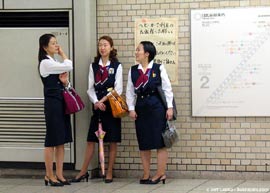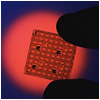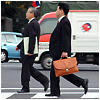
Prior to revision of the Equal Employment Opportunity Law, many companies assigned uniforms to non-career track women.
Photo Courtesy of Jeff Laitila, www.sushicam.com.
Dual Tracks in Female Occupations: Ippan Shoku (Non-Career Track) and Sōgō Shoku (Career Track)
Many large Japanese companies have two paths, a non-career track (Ippanshoku) and a carrier track (Sōgōshoku) for newly hired female regular workers. Ippanshoku women work as non-professionals, handle only assistant jobs, and their chances for promotion are limited. Sōgōshoku women are treated as professionals and have the same chance for promotion as their male colleagues do. Companies usually require women to commit to a track before hiring, and they make only a small number of career track positions available to women. By contrast, virtually all men are hired on career track positions. In 2003, The United Nations Convention on the Elimination of All Forms of Discrimination against Women (CEDAW) found this Ippanshoku/ Sōgōshoku system to be “indirect discrimination,” because it can be used to conceal gender discrimination, and called on the Japanese government to take an action against it. As the number of working women increases, the number of women who work as Sōgōshoku and assume managerial positions also increases, but promotion opportunities for women are still limited. The gender difference in promotion also appears as a gender difference in income. Even where there is no gender difference among those who are newly hired, many companies show a significant gender gap in income after several years. Click CHART to see the proportion of female managers in Japanese companies.
|

